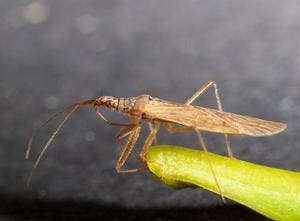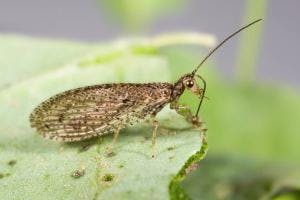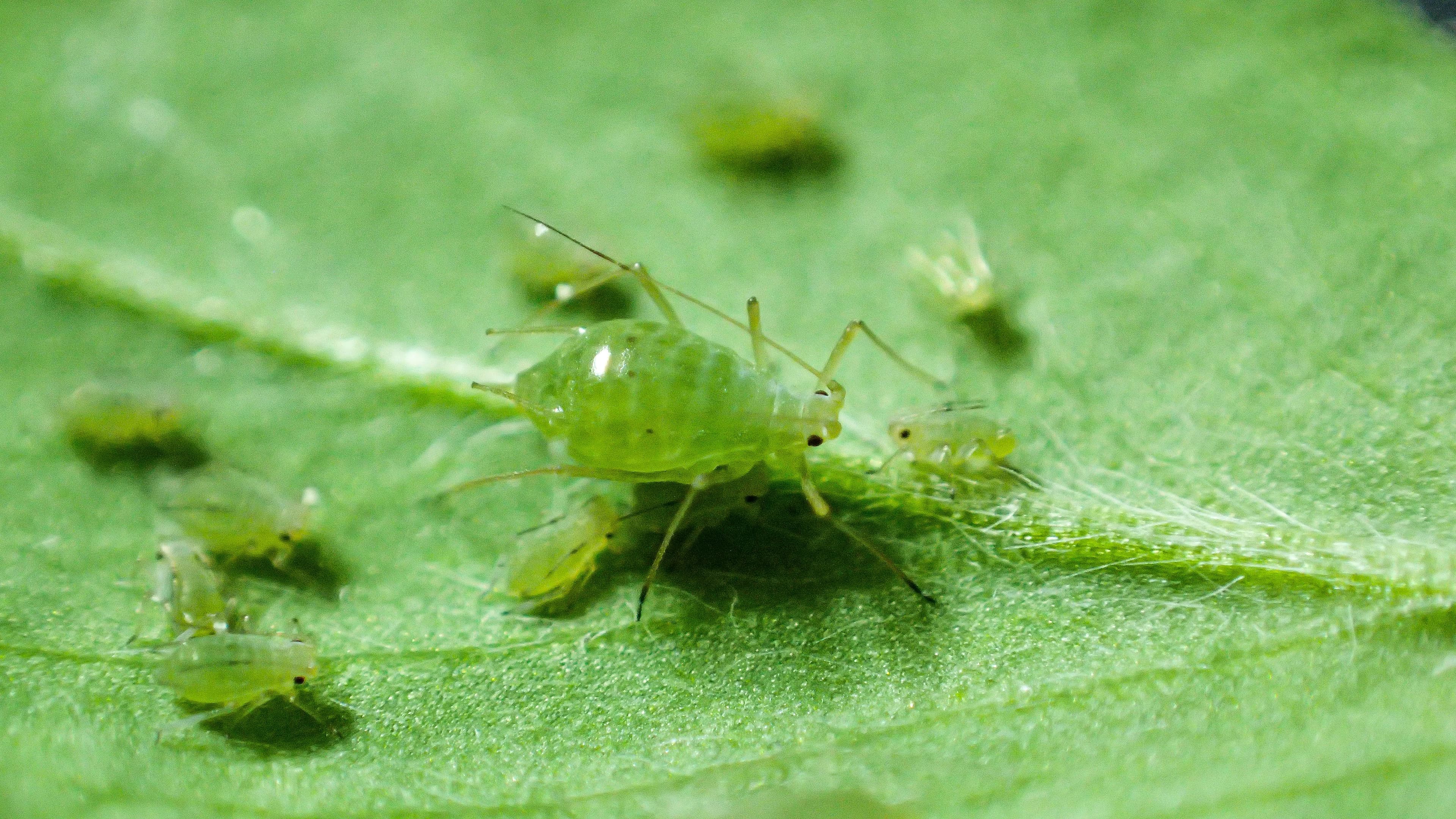
Bluegreen aphid
Acyrthosiphon kondoi
Summary
The bluegreen aphid, also known as Acyrthosiphon pisum, is a small, soft bodied insect belonging to the family Aphididae that attacks pulse crops primarily, including lucerne, annual medics and subterranean clover pastures, lupins, vetch, chickpeas and faba beans.
Adults are 1.5-3 mm long with an oval shaped body, long legs and antennae that tend to be uniform in colour. They have two large siphunculi that extend beyond the base of the abdomen. Adults can be winged or wingless, but both typically appear a blue-green colour, although may range from green to grey, and have a matte, slightly waxy appearance. Nymphs are similar to adults but are smaller in size and always lack wings.
In Australia, Aphids can reproduce both asexually and sexually, however in Australia, the sexual phase is often lost. Aphids reproduce asexually whereby females give birth to live young, which are often referred to as clones. Mature females can produce multiple generations during the growing season.
Bluegreen aphids are active year round, including the autumn and winter seasons, but numbers become particularly evident during spring when their populations reach their peak. Development rates are dependent on temperature and either cooler or extremely hot temperatures slow development.
Bluegreen aphids tend to concentrate on the upper stems of host plants in dense clusters, and are often found at the growing points. Their feeding habit primarily targets the upper leaves, stems, and terminal buds.
Damage potential, crop monitoring, and action thresholds
Chemical Management
There are several insecticides registered against bluegreen aphids in legume and pulse crops. However, bluegreen aphid populations in South Australia and NSW have evolved resistance to most chemicals registered and routinely used to control them (carbamates, organophosphate, and synthetic pyrethroids).
Continual use of organophosphates, carbamates and pyrethroids will continue to encourage the development of resistance in bluegreen aphids. Growers are highly encouraged to reduce their usage of these chemicals.
A border spray in autumn/early winter, when aphids begin to move into crops, may provide sufficient control without the need to spray the entire paddock. Additionally, the use of insecticide seed treatments can delay aphid colonisation and reduce early infestation and aphid feeding.
Alternative chemicals are available for some crops. Sulfoxaflor (Transform) is registered for use on bluegreen aphid in pulses, and has recently been registered for lucerne. Flonicamid (MainMan) is under a limited emergency permit to control insecticide resistant bluegreen aphid in the later stages of lucerne seed production.
In situations where a decision to spray has been made but heavy rain or sustained frosts occurs before the insecticide application, it is advisable to reassess the crop to determine if treatment is still necessary as aphid infestations can be reduced by these weather events.
Resistance
Biological Management
Beneficial insects can also help suppress aphids, and evidence is pointing towards generalist predatory insects (such as ladybirds, hoverflies, and lacewings) assisting in keeping bluegreen aphid numbers in check.
Aphid parasitic wasps are specialist predatory insects that use aphids as hosts by laying their eggs inside the aphid's body. The presence of parasitism can be identified by the presence of bronze-colored, enlarged aphid "mummies." These mummies are formed during the later stages of wasp development within the aphid host.
The number of observed mummies may not provide an accurate reflection of the true extent of parasitism, and it is likely that a greater number of aphids have been parasitized by the wasps than what is indicated solely by the proportion of mummies observed. If the parasitism trend increases over time, there are good prospects that aphid populations will be controlled naturally.
Aphid populations can also be influenced by naturally occurring fungal diseases such as Pandora neoaphidis and Conidiobolus obscurus.
Natural Enemies
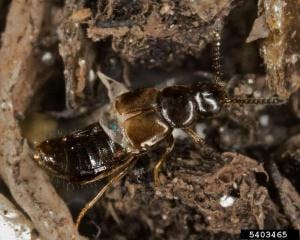
Rove beetles
Family: Staphylinidae
Moderate efficacy
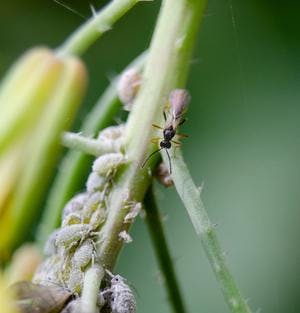
Aphid parasitoids
Order: Hymenoptera
High efficacy
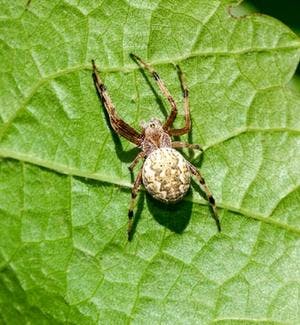
Spiders
Order: Araneae
Low efficacy
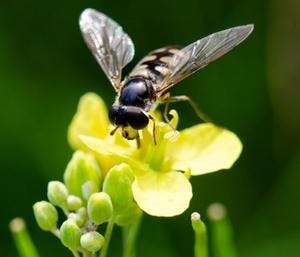
Hoverflies
Syrphidae sp.
Moderate efficacy
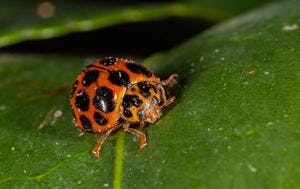
Ladybird beetles
Family: Coccinellidae
Moderate efficacy
Cultural Management
Effective cultural management of viruses is crucial in regions susceptible to disease outbreaks, as pulse aphids transmit plant viruses and diseases. It is recommended to conduct regular monitoring of susceptible crops from bud formation until late flowering. During this period, aphids typically migrate into the fields from roadsides, and the initial signs of damage will often be observed at the edges of the crop.
Best practice cultural strategies include
- Sowing cultivars with resistance to aphid feeding damage
- Allow crops to begin flowering before aphid numbers peak in Spring by planting early
- Reduce the green bridge prior to sowing to reduce the presence of alternative hosts that shelter aphids between growing seasons.
- Employing a high sowing rate promotes a dense crop canopy, which acts as a deterrent to aphid landings.
Resources
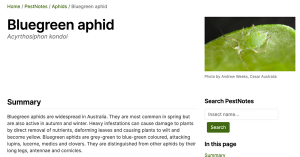
Bluegreen aphid - PestNotes
Identification
Management
